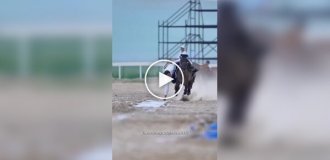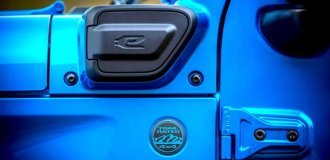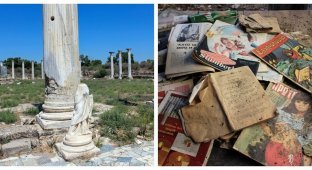Battle of Paphos. Brilliant victory of Turkish aviation over Turkish fleet (4 photos)
During military conflicts, friendly fire incidents sometimes occur. One of the largest cases of "friendly fire" occurred near the town of Paphos during the Turkish invasion of Cyprus in 1974. 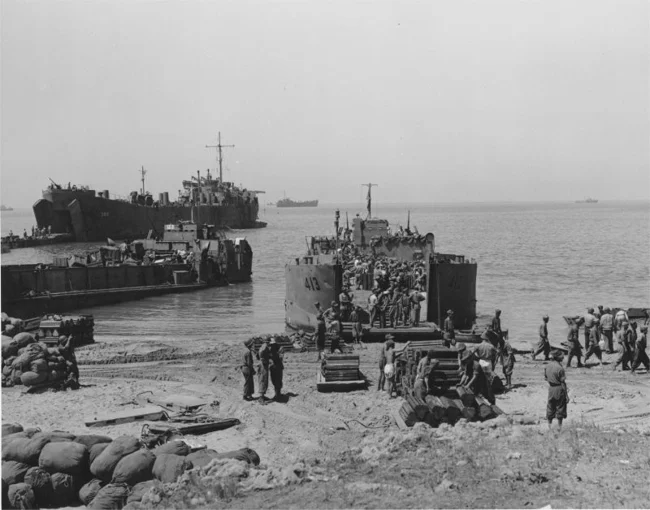
The USS Boone County (far left at the pier) disembarks troops in Sicily, 1943. Renamed Lesvos in May 1960 and transferred to Greece. In 1974, he set in motion a chain of events that led to the Battle of Paphos
On July 15, 1974, a military coup took place on the island. As a result, the Greek Cypriots from the EOKA movement came to power, wanting to annex the Republic of Cyprus to Greece, where the junta of the "black colonels" ruled at that time. Turkey was categorically against it, and on July 20, it began a military operation against Cyprus.
On July 19, the transport Lesvos (former USS Boone County) left the Cypriot port of Famagusta. The ship, sailing without an escort, was transporting 450 Greek soldiers stationed on the island back to their homeland. It was discovered by a Turkish reconnaissance aircraft RF-84F Thunderflash, whose pilot reported this to his command.
On the morning of July 20, several Greek ships located near the island of Rhodes, having received information about the beginning of the Turkish invasion, headed for Cyprus. They were detected by Grumman S-2E Tracker patrol aircraft, and the Turkish command decided that these ships intended to meet with the transport and attack the landing force together. Independently of each other, the Turkish Air Force and Navy received orders to destroy the enemy force. This was one of the main reasons for the subsequent incident.
At night, the Turks stopped tracking the actions of the Greek fleet with aircraft, relying on radar. However, the Greeks who left Rhodes disappeared from radar as well - as it turned out later, they simply returned back, which the Turkish command did not even suspect. Lesvos left the Paphos area on the evening of July 20, having previously shelled the city and landed troops in the port.
Meanwhile, early in the morning of July 21, a Turkish squadron of three Gearing-class destroyers arrived at the northern coast of Cyprus: Adatepe (former USS Forrest Royal), Kocatepe (former USS Harwood) and Mareşal Fevzi Çakmak (former USS Charles H. Roan). Having no means of countering the destroyers, the Greek intelligence station in Paphos transmitted its gratitude to the arriving "Greek" fleet on a radio frequency monitored by the Turks. 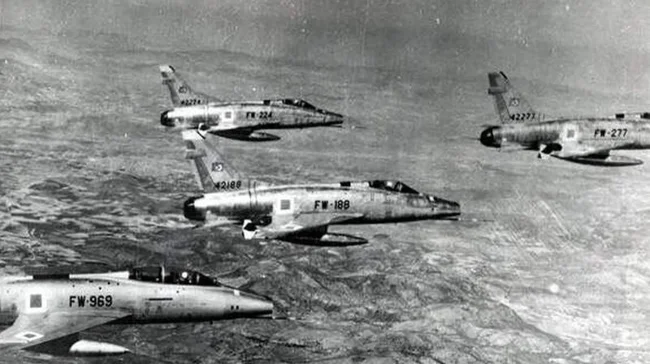
A squadron of Turkish F-100 fighter-bombers in the skies over Cyprus, 1974
The Turkish Air Force command bought into this provocation. Without checking the intelligence, it ordered the sinking of the "Greek destroyers." 48 fighter-bombers were allocated for this task - 28 F-100D, 18 F-104G and two F-100C. The pilots were assured that there were no Turkish ships off the western coast of Cyprus, so there was no need to worry about hitting their own - there was a clear lack of coordination between the two branches of the armed forces.
While the Air Force was preparing the attack, the Navy command ordered the destroyers to move to Paphos and sink any ships with the Cypriot flag. The crews were warned of possible retaliatory actions by Greek and Cypriot forces. 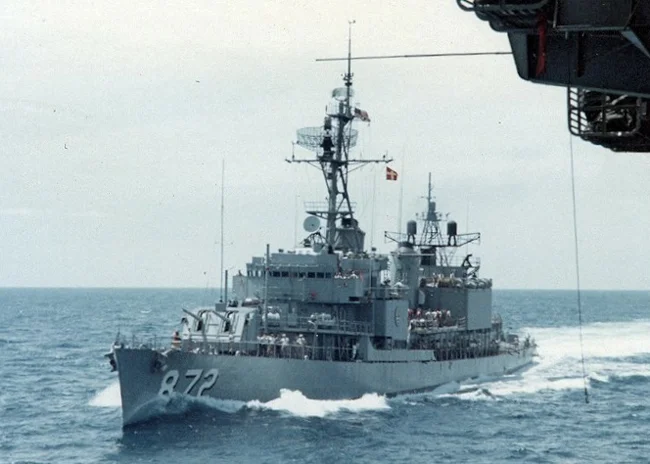
Destroyer USS Forrest Royal, future Adatepe. Photo taken off the coast of Vietnam from the aircraft carrier USS Hancock, April 1967
Turkish aircraft arrived in the designated area after noon. Having failed to find the "Greeks" near Kyrenia, where the Turkish ships had been previously, the pilots expanded the search area and found the "enemy" near Paphos. Then the technical side played a role: since Turkey and Greece were members of NATO, both countries had both F-104Gs and Gearing-class destroyers in service. In addition, neither the planes nor the ships had a radar system for identifying friend or foe. Therefore, the pilots were unable to correctly identify the destroyers, and their Turkish flags were mistaken for a military ruse.
The attack began at 14:35. The fighter-bombers split up and began to take turns approaching the destroyers, dropping bombs. The ships responded with anti-aircraft fire from universal 127-mm and anti-aircraft 40-mm guns. They managed to create a dense fire curtain, making attacks difficult, and even shot down one F-104G, whose pilot ejected.
Earlier, in the Kyrenia area, the Cypriots shot down a Turkish plane. Its pilot noticed the "battle" and contacted his colleagues by radio. Trying to explain that Turkish ships were attacked, he could not provide the code word as confirmation, which was changed after his plane was shot down. Therefore, the attackers did not believe him and only laughed on the air, praising the downed pilot for his good knowledge of the Turkish language.
According to unconfirmed reports, the destroyers managed to shoot down two more aircraft - F-100D and F-100C. All three ships were damaged. Mareşal Fevzi Çakmak escaped with shrapnel damage from close explosions, Adatepe received several more serious hits. 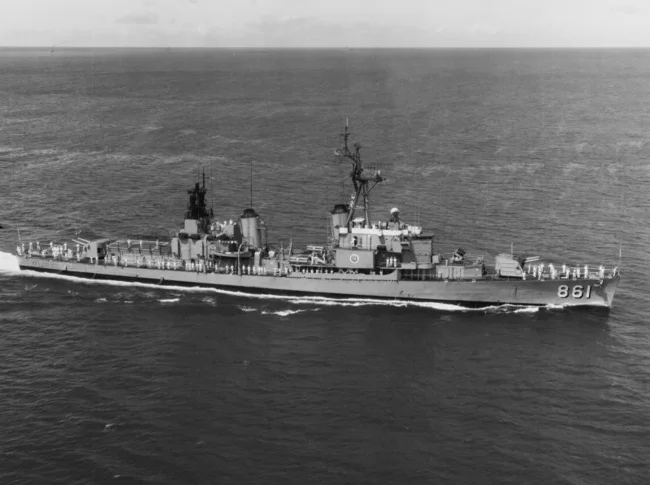
Destroyer USS Harwood, future Turkish Kocatepe, photo taken between 1962 and 1972
Kocatepe suffered the most. During the first raid, it lost its combat information post and the ability to coordinate anti-aircraft fire. Subsequent attacks caused additional damage, and then a direct hit blew up the ammunition magazine. The destroyer sank around 22:00. Between 54 and 77 people (sources vary) died on board, the survivors were picked up by the Turkish destroyer Tarihçe, an Israeli training ship, a Lebanese cargo ship, and British helicopters from a nearby air base.
The battle at Paphos significantly worsened Turkey's situation - a destroyer was lost, and two others were put out of action for a long time. The Turkish fleet was forced to reduce its activity near Cyprus, which undoubtedly eased the situation for the Cypriots. In Turkey itself, the incident was immediately called a major victory over the Greek fleet by news agencies. When accurate data on losses was received, the information disappeared from the pages of newspapers and was buried in the archives. These are the consequences of poor cooperation between branches of the military and blind faith in radio intercept data.









